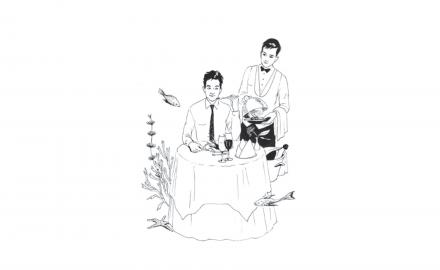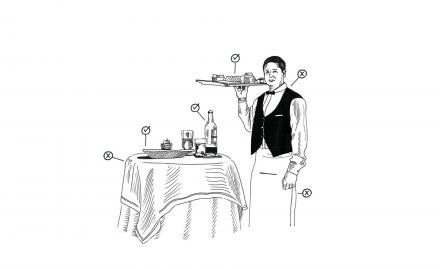N°2 Towards new methods of consumption?
year. In the face of new stakes, the restaurant
industry sector needs to adapt in order to
respond to its consumers better.
The crisis has generated new behaviour
Manufacturers, mainly in the car and clothing sectors, have had to rethink their commercial strategies in order to align themselves better with the new shopping behaviour of consumers. With the decline in purchasing power, net sales of quality and novel products have dropped. For most, shopping is now guided by “bargains”.
When cooking becomes a trend
In spite of the bad economic situation, the restaurant industry sector is perhaps one of the only ones with the
power to compete in the game. Indeed, in the minds of consumers, cooking is still synonymous today with a
time for sharing, for pleasure and friends. Is it necessary to prepare for a change in long-held habits even in this activity sector? Have the signs of a new era been glimpsed? The “world” of the restaurant industry provokes a certain enthusiasm in society today. We are speaking about culinary art. The media coverage of our profession owes much to the adverts and cooking programmes aired on television. This has made a
profession, which could have been perceived as restrictive or reserved for a certain gastronomic elite, more accessible. We are offering Christmas cooking courses, top chefs have acquired a level of celebrity and we are using social networking sites to post photographs of the dishes that can be tasted in the restaurants.
The rejection of “junk food”
The attention placed on the product is one of the effects of this media coverage of cooking and gastronomy.
According to the French Minister of Agriculture, consumers have an increasing amount of power in
identifying the origin of the products they buy. Thus, sales direct from farmers have largely gained public
favour (16.3% of farmers carry out direct sales, according to the “local distribution and marketing”
Work Group Report, published in March 2009) to the detriment of supermarkets which are confronted with
problems of traceability. New distribution networks are appearing, which include buying direct from the farm.
The enthusiasm for “home-made” and the promotion of buying local are also increasing and attracting more
and more supporters. These trends reveal the new demands of householders who want to know the cost of
products, but also their origin and the ways in which they were produced. The growing success of “locavorism” is very revealing. Originating in San Francisco, the movement advocates eating only local, seasonal products, or products that you have grown yourself. A notion of proximity which reassures the consumer. In practice, locavores feed themselves with food which comes from a 160 km radius. For example, a French locavore will remove Madagascan prawns and Spanish cherries from his diet to benefit products from his own region, all the while respecting the seasons.
These are big challenges for the sector
As professionals in the restaurant industry, we need to adapt to these new consumer trends. Developing market cuisine, working with seasonal products, privileging micro-farms, promoting community supported agriculture (CSA) networks and eco-friendly restaurants... these are some of the answers that we can
bring to the double challenge: to offer quality products and cuisine, all the while respecting the environment
and the principles of sustainable development.
Realize with Institut Paul Bocuse



